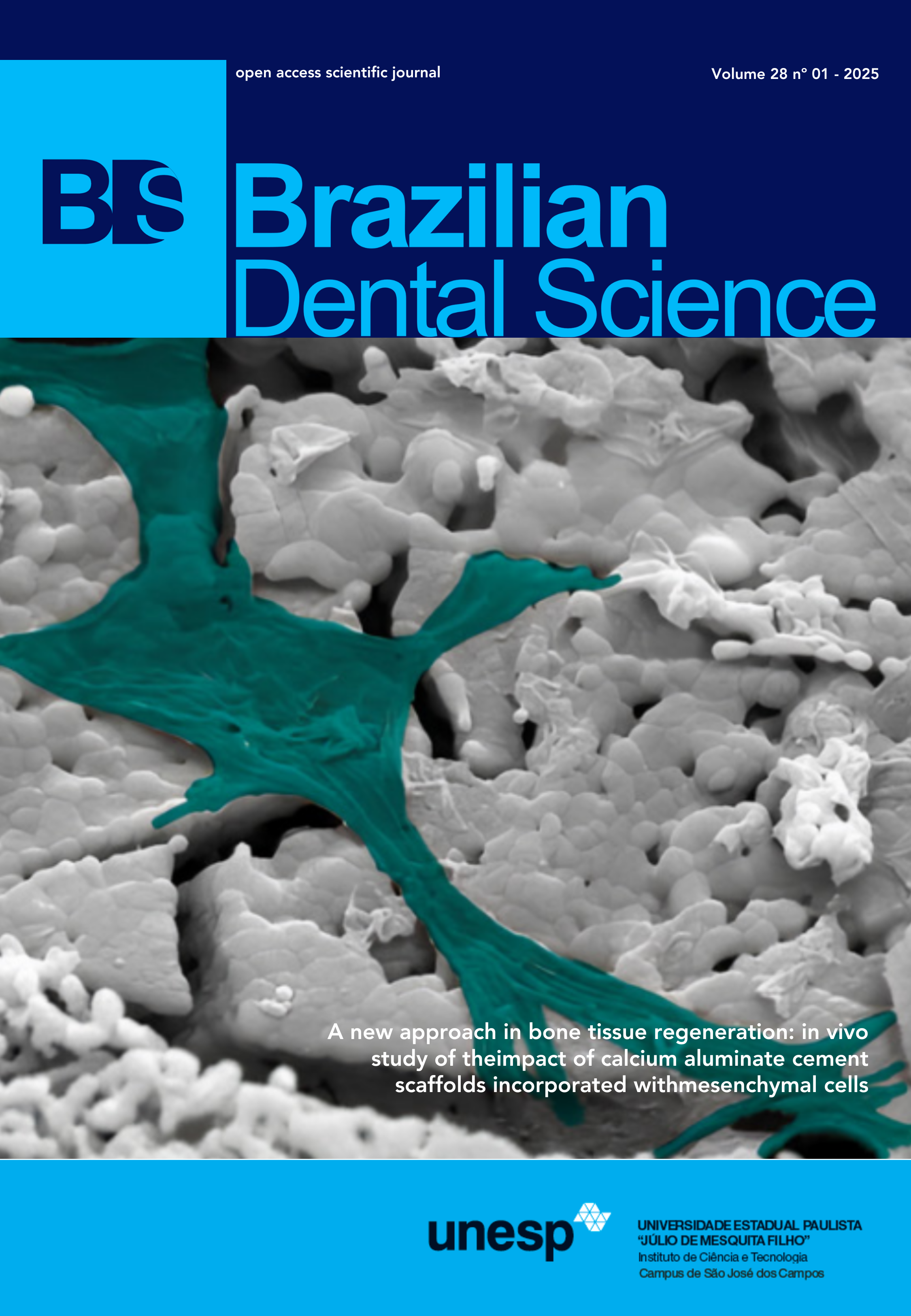Validation of CBCT panoramic reformatting compared to conventional panoramic radiography for age determination using the Demirjian method
DOI:
https://doi.org/10.4322/bds.2025.e4668Abstract
Objective: Estimating age from dental development is a useful indicator that is considered highly reliable and can be of great help in determining an individual’s age, although the accuracy of different methods has not been systematically investigated. The aim of this study was to evaluate images of conventional digital panoramic radiographs (CP) and panoramic reformats (PR) obtained from cone beam computed tomography (CBCT) in order to confirm the similarity of the methods. Material and Methods: A sample of 20 patients who had conventional panoramic radiographs (CP) and also CBCT exams was evaluated. These examinations were performed on the same date, so there was no variation in the mineralization stage in the different images. The images were analyzed by a dentist, a specialist in Radiology and Imaging, and, before the beginning of the analysis, an intra-examiner calibration was performed, resulting in a good Kappa index evaluation (> 0.5). Results: In this study, age estimation based on mineralization analysis of mandibular third molar teeth was not altered when using PR (CBCT) or CP. The difference in median values between the two groups is no statistically significant difference. Conclusion: The methods evaluated were found to be consistent with one another, thereby confirming the similarity of their efficacy.
KEYWORDS
Age determination by teeth; Cone beam computed tomography; Forensic Dentistry; Panoramic radiography; Radiography, Dental.
Downloads
Published
How to Cite
Issue
Section
License
Copyright (c) 2025 Brazilian Dental Science

This work is licensed under a Creative Commons Attribution 4.0 International License.
Brazilian Dental Science uses the Creative Commons (CC-BY 4.0) license, thus preserving the integrity of articles in an open access environment. The journal allows the author to retain publishing rights without restrictions.
=================




























